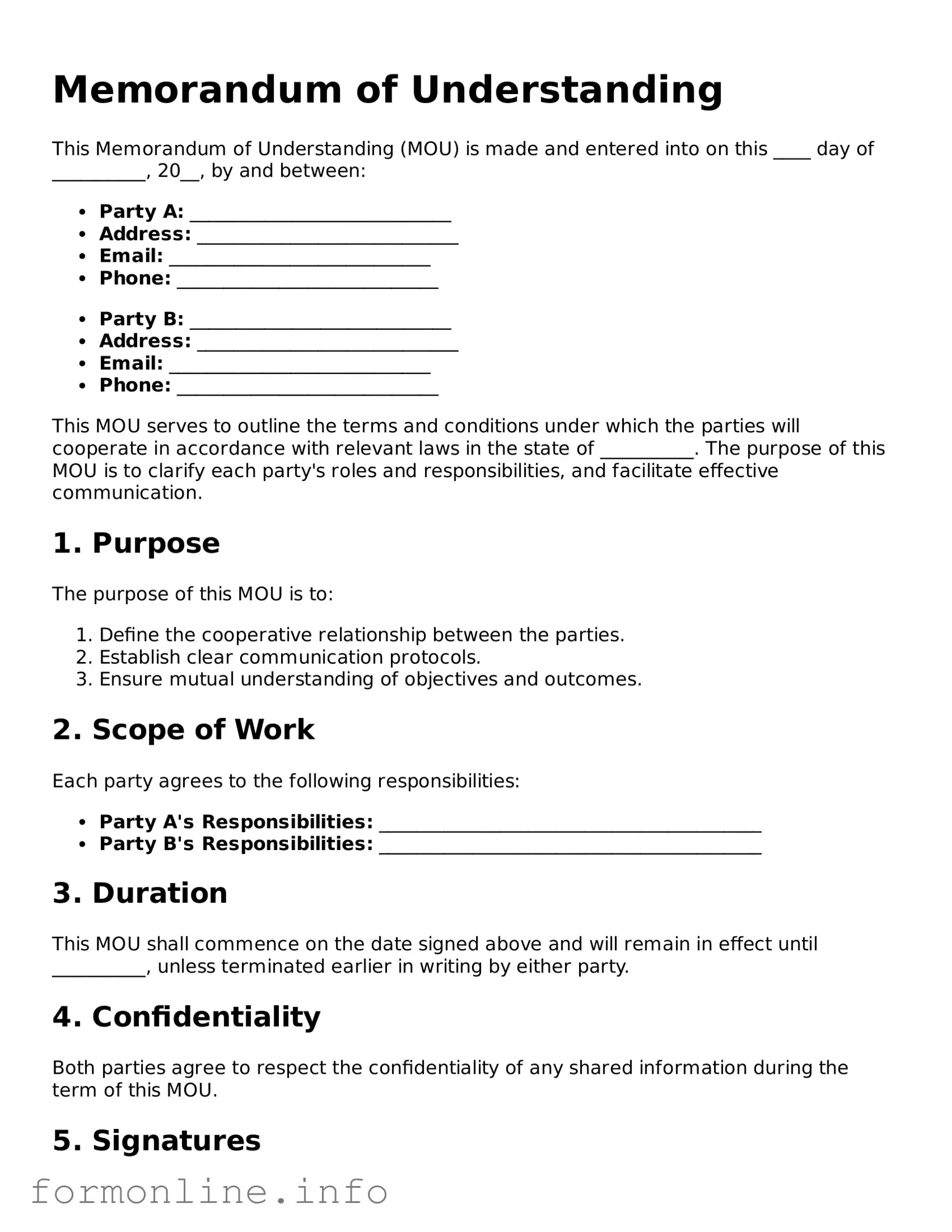The Letter of Intent (LOI) is a document that outlines the preliminary understanding between parties who intend to enter into a more formal agreement. Like a Memorandum of Understanding (MOU), an LOI serves as a non-binding agreement that expresses the intention to negotiate and finalize specific terms. Both documents are often used in business negotiations to clarify the expectations of the parties involved, although the LOI may include more detailed terms about the proposed agreement compared to an MOU.
A Non-Disclosure Agreement (NDA) is another document that shares similarities with a Memorandum of Understanding. An NDA is designed to protect sensitive information shared between parties during negotiations or discussions. While an MOU may outline the general terms of collaboration, an NDA focuses specifically on confidentiality. Both documents are often used in business contexts where parties wish to explore potential partnerships while safeguarding proprietary information.
The Partnership Agreement is a formal document that outlines the terms and conditions of a partnership between two or more parties. Similar to an MOU, it defines the roles, responsibilities, and expectations of each partner. However, a Partnership Agreement is legally binding, whereas an MOU typically is not. Both documents aim to establish clear communication and understanding between the parties, but the Partnership Agreement provides more detailed legal obligations.
A Service Agreement is a contract that outlines the terms under which services will be provided between parties. Like an MOU, it serves to clarify the expectations and responsibilities of each party. However, a Service Agreement is legally binding and includes specific details about payment, timelines, and deliverables. Both documents are used to ensure that all parties are on the same page regarding their commitments, but the Service Agreement enforces those commitments legally.
In the realm of property transactions, understanding related documents is essential, especially when dealing with sales of mobile homes, which necessitate crucial legal paperwork such as the Mobile Home Bill of Sale. This document is vital for ensuring that ownership transfers are conducted smoothly and legally, protecting the interests of both the buyer and the seller throughout the process.
The Terms of Service (ToS) document is often utilized by businesses to outline the rules and guidelines for using their services. Similar to an MOU, it establishes a mutual understanding between the service provider and the user. While an MOU is typically more flexible and less formal, a ToS is a binding agreement that users must accept to access the service. Both documents serve to protect the interests of the parties involved and clarify the scope of the relationship.
A Collaboration Agreement outlines the terms under which two or more parties will work together on a specific project. Like an MOU, it seeks to define the roles and responsibilities of each party involved. However, a Collaboration Agreement is often more detailed and legally binding, specifying contributions, timelines, and outcomes. Both documents aim to foster cooperation and understanding, but the Collaboration Agreement enforces the commitments made by each party more strictly.
